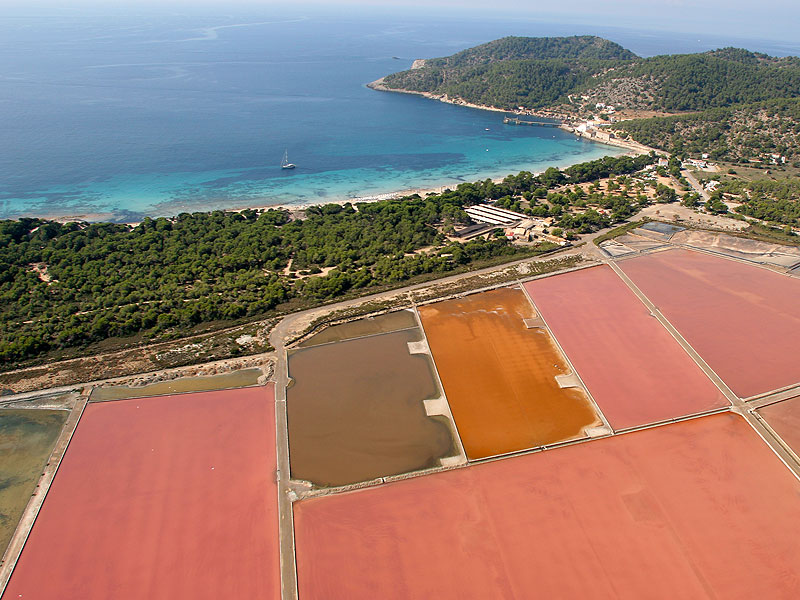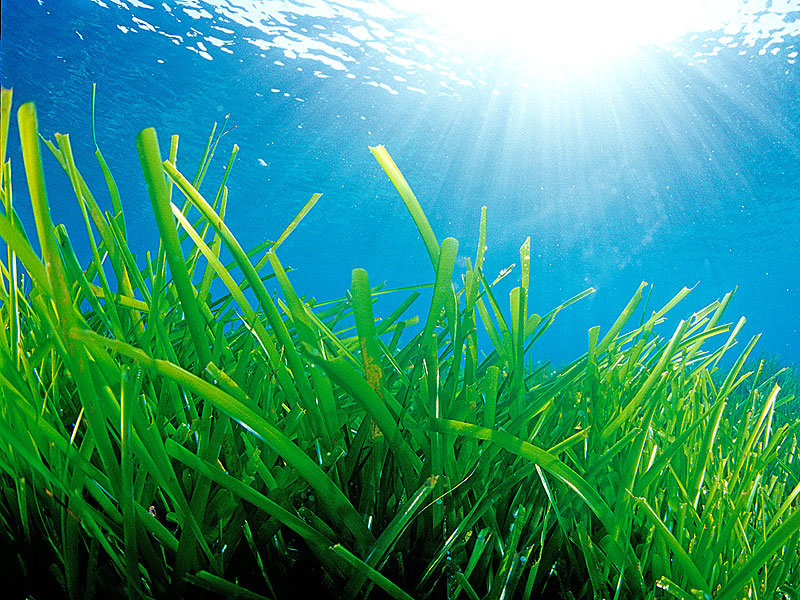Eivissa is an excellent example of the interaction of the marine and coastal ecosystems. The thick meadows of posidonia oceanica, a seagrass species that is only found in the Mediterranean, contain and support the diversity of the marine life. It is an ecosystem with great plant and animal biodiversity.
Ecosystem

The indigenous flora is heavily influenced by its proximity to the sea, the high level of salinity and the mobility of the sandy substratum meaning it is of great botanic interest. Of the various types of plant communities, we should mention the characteristic plants that grow in dunes and sandy areas, as well as in the marshes and salt marshes.
In the dunes of the Balearic Islands there are some of the most interesting plant formations, the forests of Phoenician juniper (Juniperus phoenicea) which, while not exclusive to the Balearic Islands, are found here with their most genuine character. In the land adjacent to the salt flats, the communities of Limonium or sea lavender are particularly significant the most endemic plants in the Balearic Islands, the existence of which is linked to salt production activities.
All groups of vertebrates are found in the Balearic Islands, from reptiles to mammals. Lizards are the only vertebrates that are truly native to the islands and make up the most charismatic group. As far as birds are concerned, Ses Salines is the place with the greatest ornithological diversity on the Balearic Islands. Of the land mammals, the phenomenon of insularity has created some sub- species native to the islands (neo-endemism), such as the case of the Eivissan civet cat and shrew and the Formentera dormouse.
The seabed

The sea acts as a privileged element of union between natural and cultural assets. The posidonia seagrass and the formations that it originates are, and have been, a basic pillar for the creation of important resources for the economy of the islands –fishing and salt in the past and, today for the tourist industry, for its contribution to the formation of beaches and the purity of the water.
Therefore, the sea is a source of wealth and an intrinsic element to the particular identity of the Balearic Islands. The sandy substrate that is characterised by moderate depth and the transparency of the water, is the ideal environment for the posidonia oceanica, whose meadows shape the dominant landscape of a barely altered marine ecosystem.
The meadows of posidonia seagrass are considered to be a priority protection habitat by the Habitat Directive of the European Union. The area is also a special bird protection area (SPA) and is included in the Natura 2000 network of the EEC and registered in the Ramsar Convention on the List of Wetlands of International Importance. It has been the Natural Reservation of Ses Salines since 1995.
The meadows of posidonia seagrass off the Balearic Islands are considered to be the most important community on the Mediterranean coast due to their production of organic matter, oxygenating and filtering the water, in addition to reducing the force of the waves, thus protecting the beaches from erosion.
Posidonia is a phanerogam plant that is endemic to the Mediterranean Sea, which has an external organisation typical of higher forms of plant life: roots, stem, leaves and the ability to produce flowers and fruits with seeds. It grows covering the seabed and forming leafy meadows. It is found in a state of alarming regression due to its high sensitivity to environmental disturbances, while in Ibiza, it is in an excellent state, and is essential for containing the exceptionally beautiful features of the place, as well as maintaining the essential processes for preserving the ecosystem and the biodiversity it houses.
An underwater coastal ecosystem of extraordinary value with threatened species of great scientific value that shape a Mediterranean landscape made unique by its cultural and natural richness.
